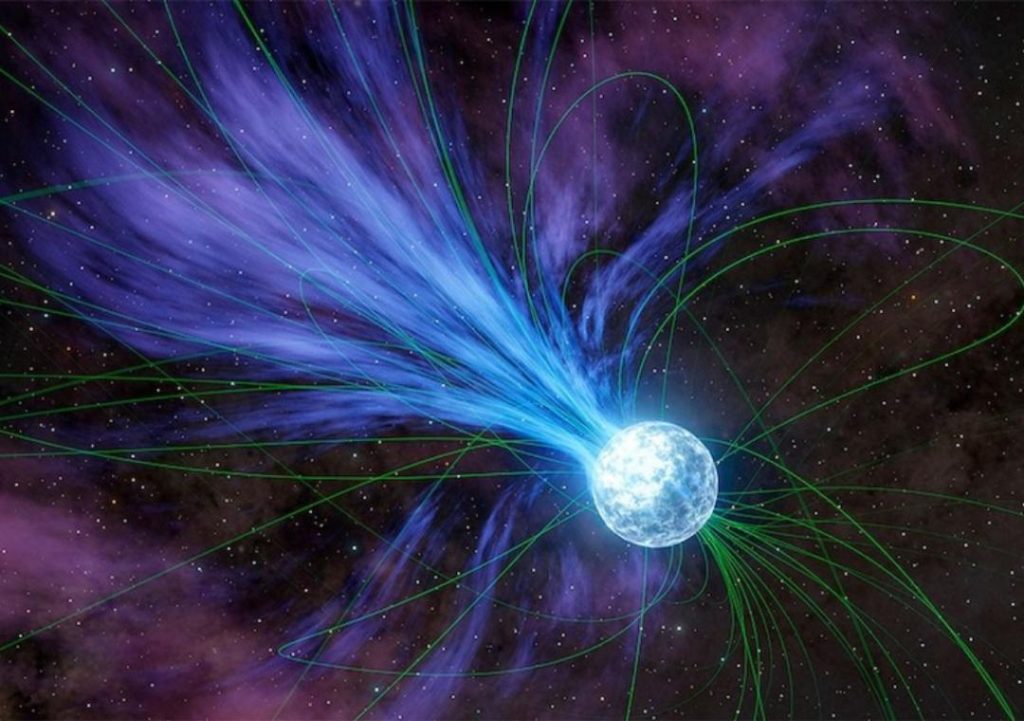
Gold & Platinum Created through Neutron Stars’ Explosions: Study
For centuries, humans have been fascinated by the origins of precious metals like gold and platinum. While we have long known that these metals are found naturally on Earth, their exact origin has remained a topic of debate and speculation. However, a recent study has shed new light on the formation of these valuable elements, and the answer lies in the explosive power of neutron stars.
According to a study led by Columbia University student Anirudh Patel, magnetars – highly magnetized neutron stars – played a crucial role in creating elements like gold and platinum in a cosmic event that occurred over 20 years ago. The study, which was published in the journal Nature, reveals that the magnetars exploded and released flares that contained these precious metals.
To understand how this process works, it’s essential to have a basic grasp of the formation and behavior of neutron stars. Neutron stars are incredibly dense objects that are formed when a massive star runs out of fuel and collapses in on itself. This collapse creates an intense amount of heat and pressure, causing the star’s matter to be compressed into a singularity – a point of infinite density and zero volume.
Neutron stars are known for their incredibly strong magnetic fields, which are responsible for their intense radiation and explosive behavior. Magnetars, in particular, are a type of neutron star that is characterized by its extremely strong magnetic field – so strong, in fact, that it can outshine the entire galaxy.
The study in question focused on a magnetar explosion that occurred in the Milky Way galaxy over 20 years ago. The explosion released a massive amount of energy, including a burst of radiation that contained elements like gold and platinum. According to Patel and his team, this radiation was formed when the magnetar’s magnetic field was stretched and twisted, causing the atoms in the star’s atmosphere to be heated to incredibly high temperatures.
As the atoms cooled, they began to combine to form more complex elements, including gold and platinum. These elements were then released into space, where they were carried by solar winds and other cosmic phenomena to distant planets and stars.
The study’s findings have significant implications for our understanding of the origins of precious metals. According to Patel, the explosion of a magnetar can create an enormous amount of gold and platinum – enough to supply the entire Earth’s supply many times over.
Furthermore, the study suggests that magnetar explosions may be a relatively common occurrence in the universe. Patel estimates that these explosions happen approximately once per decade in the Milky Way galaxy and annually across the observable universe.
While the study’s findings are significant, they also raise a number of intriguing questions about the origins of precious metals on Earth. For example, if magnetar explosions are responsible for creating gold and platinum, where did these elements end up on our planet?
One possibility is that the elements were carried to Earth on meteorites or comets that collided with our planet in the distant past. Another possibility is that the elements were created in the Earth’s own core, through a process known as nucleosynthesis.
Regardless of how gold and platinum ultimately ended up on our planet, the study’s findings are a powerful reminder of the incredible forces that shape our universe. The creation of these precious metals is a testament to the awe-inspiring power of neutron stars and the incredible events that occur in the cosmos.
Source:






